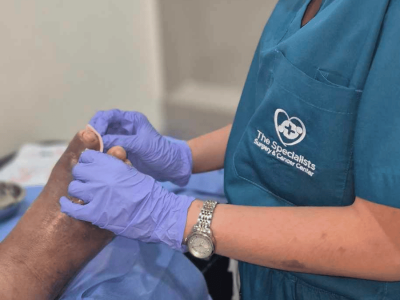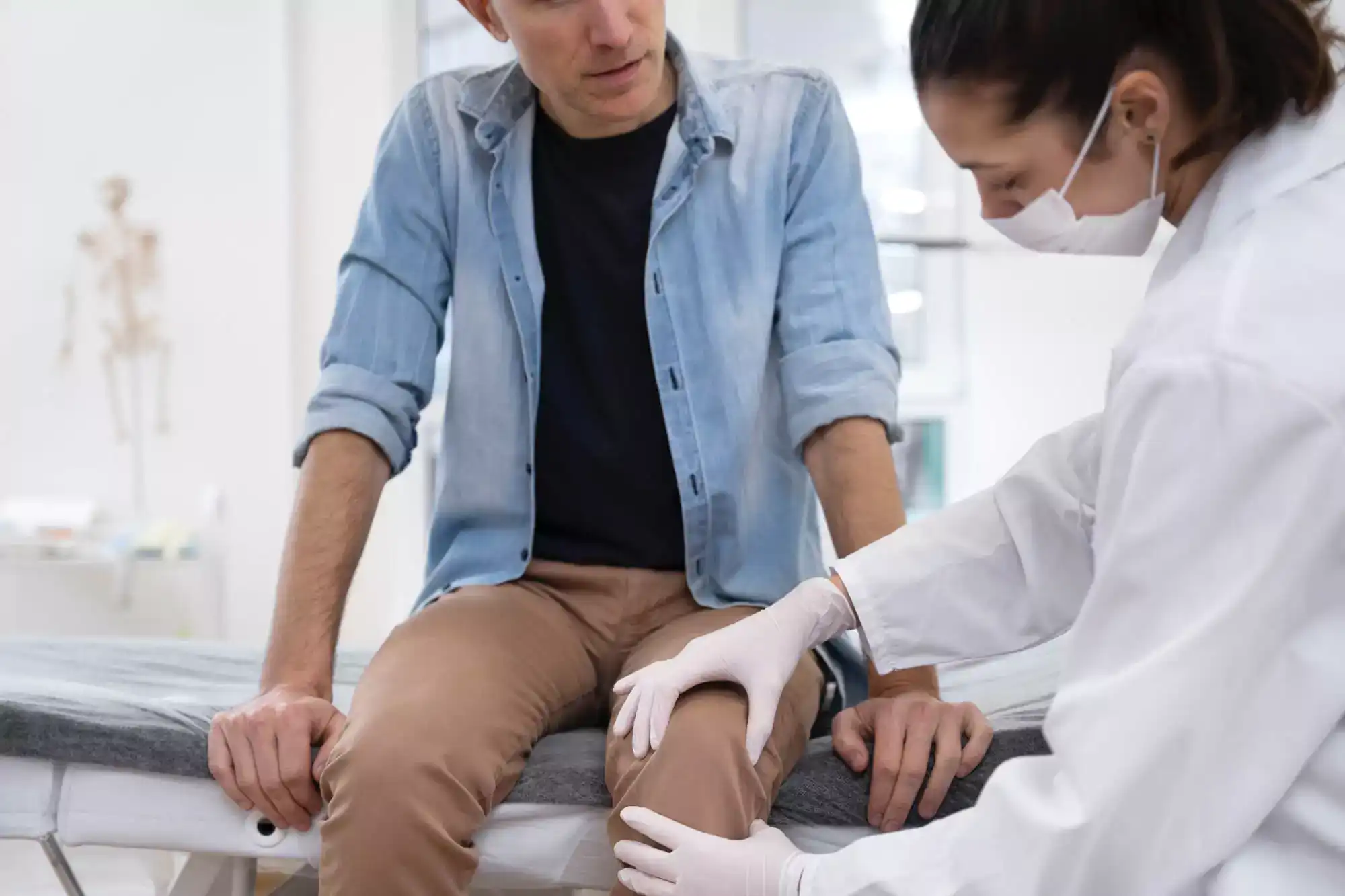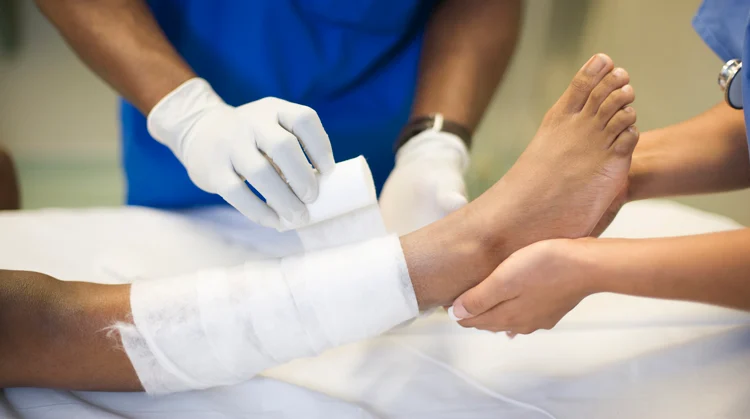Necrotic foot is a severe medical condition where foot tissues die due to inadequate blood supply, infections, or other underlying health issues such as diabetes. If left untreated, necrotic foot can lead to life-threatening complications, including severe infections and amputations. Orthopedic Treatment for Necrotic Foot plays a crucial role in managing this condition and preventing further damage. By addressing the root cause and providing specialized care, orthopedic treatment helps improve mobility, enhance healing, and reduce the risk of severe complications. Understanding the right treatment approach is essential for those at risk.
Understanding Necrotic Foot
What is Necrotic Foot?
Necrotic foot occurs when the tissues in the foot begin to die due to poor blood circulation or infection. This can be caused by conditions such as diabetes, peripheral artery disease, trauma, or untreated wounds. Orthopedic Treatment for Necrotic Foot focuses on improving circulation, preventing infections, and supporting the affected foot to minimize further tissue damage.
Common Causes of Necrotic Foot
- Diabetes: High blood sugar levels can damage blood vessels, reducing circulation and increasing the risk of necrosis.
- Peripheral Artery Disease (PAD): Narrowed blood vessels restrict blood flow to the foot, leading to tissue death.
- Infections: Untreated wounds, ulcers, or bacterial infections can cause rapid tissue deterioration.
- Trauma or Injury: Severe injuries that impair blood supply can result in necrotic tissue formation.
Recognizing the early signs of necrotic foot and seeking Orthopedic Treatment for Necrotic Foot can significantly improve outcomes and prevent complications.
The Role of Orthopedic Treatment in Managing Necrotic Foot
Orthopedic Assessment and Diagnosis
Before starting any Orthopedic Treatment for Necrotic Foot, specialists perform a thorough evaluation to determine the severity of the condition. This includes:
- Physical examination to assess tissue damage and infection levels.
- Imaging tests (X-rays, MRI, or CT scans) to evaluate bone health and detect underlying issues.
- Blood flow tests to measure circulation efficiency and identify blockages.
Orthopedic Interventions for Necrotic Foot
- Offloading Techniques: Reducing pressure on the affected foot using orthopedic devices, such as walking boots or braces.
- Custom Footwear: Special orthopedic shoes designed to distribute weight evenly and prevent excessive pressure on necrotic areas.
- Bracing and Support: Orthopedic braces help stabilize the foot, reducing stress on damaged tissues.
- Surgical Debridement: Removing dead tissue to allow healthy tissue to regenerate and heal more effectively.
Common Complications of Necrotic Foot and How to Prevent Them
Infection Spread
One of the biggest risks of necrotic foot is the spread of infection, which can lead to sepsis if untreated. Orthopedic Treatment for Necrotic Foot aims to prevent infections through proper wound care, antibiotics, and surgical intervention when necessary.
Amputation Risk
If necrotic tissue is left untreated, amputation may become necessary to stop the infection from spreading. Orthopedic specialists focus on limb preservation strategies, such as vascular surgery, tissue grafting, and aggressive wound care, to avoid amputation whenever possible.
Bone Deformities & Joint Damage
Without timely Orthopedic Treatment for Necrotic Foot, structural deformities can occur due to bone loss and joint deterioration. Proper bracing, realignment surgeries, and rehabilitation programs help maintain foot structure and function.
Reduced Mobility & Quality of Life
Mobility issues often arise when necrotic foot is not managed correctly. Orthopedic interventions, including physical therapy and custom orthotic solutions, help restore movement and improve overall quality of life.
Best Practices for Preventing Complications
Proper Wound Care & Hygiene
Keeping the affected foot clean and dry is crucial in preventing infections. Regular wound cleaning, application of antiseptic solutions, and dressing changes are key aspects of Orthopedic Treatment for Necrotic Foot to ensure faster healing.
Regular Check-ups with an Orthopedic Specialist
Routine visits to an orthopedic doctor help detect early signs of deterioration, ensuring timely intervention. Monitoring foot health through periodic exams can prevent serious complications from arising.
Use of Orthopedic Supports
Custom-made orthopedic shoes, braces, and insoles play a critical role in redistributing pressure and reducing stress on affected areas. Using these aids as part of Orthopedic Treatment for Necrotic Foot can significantly slow down disease progression.
Lifestyle Modifications
- Managing Diabetes: Controlling blood sugar levels reduces the risk of foot complications.
- Improving Circulation: Regular exercise, avoiding smoking, and maintaining a healthy diet enhance blood flow to the feet.
- Avoiding Foot Trauma: Wearing protective footwear and inspecting feet daily can help prevent injuries that could worsen necrotic foot conditions.
When to Seek Immediate Medical Attention
Timely intervention is crucial in Orthopedic Treatment for Necrotic Foot. Seek immediate medical help if you experience:
- Increased pain, swelling, or redness in the affected area.
- Persistent wounds that do not heal.
- Signs of infection such as pus, fever, or foul-smelling discharge.
- Numbness or a change in foot colour (black, blue, or deep red tissue indicates severe necrosis).
A multidisciplinary approach involving orthopedic specialists, vascular surgeons, and wound care experts can provide the best treatment outcomes for patients with necrotic foot.
Takeaway
Preventing complications in necrotic foot requires proactive care and expert management. Orthopedic Treatment for Necrotic Foot offers a comprehensive approach to preserving foot function, preventing infections, and avoiding amputation. Regular check-ups, proper wound care, lifestyle modifications, and the use of orthopedic devices all contribute to better patient outcomes. If you or a loved one is at risk, seeking early orthopedic intervention can make a significant difference in maintaining mobility and overall health.
If you suspect any signs of necrotic foot, consult an orthopedic specialist immediately to ensure the best possible care and prevent serious complications.











